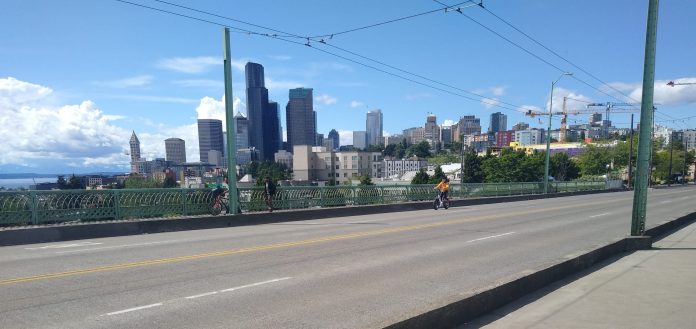This week the Seattle Department of Transportation (SDOT) is starting construction on a protected bike lane across the Dr. Jose Rizal Bridge on 12th Avenue South between Little Saigon and north Beacon Hill. This will be the first segment of a safe bicycle connection running throughout Beacon Hill expected to be completed by 2023, but the 12th Avenue South segment going in this year will stop short of making some tantalizingly close connections to existing facilities.
The Jose Rizal Bridge previously had two traffic lanes in each direction, but rarely filled with traffic due to the number of lanes meeting the bridge on the Beacon Hill side. Early this year, SDOT had proposed a design that included both lanes of bicycle traffic together in a two-way lane on the north side of the bridge, but this would have meant people biking south would have been separated by traffic coming the opposite direction by only a paint-and-post bike lane. After hearing community feedback, they modified the design to protected bike lanes on each side of the street, following the direction of traffic, still separated by paint-and-posts. The bridge will go down to one general purpose lane in each direction.
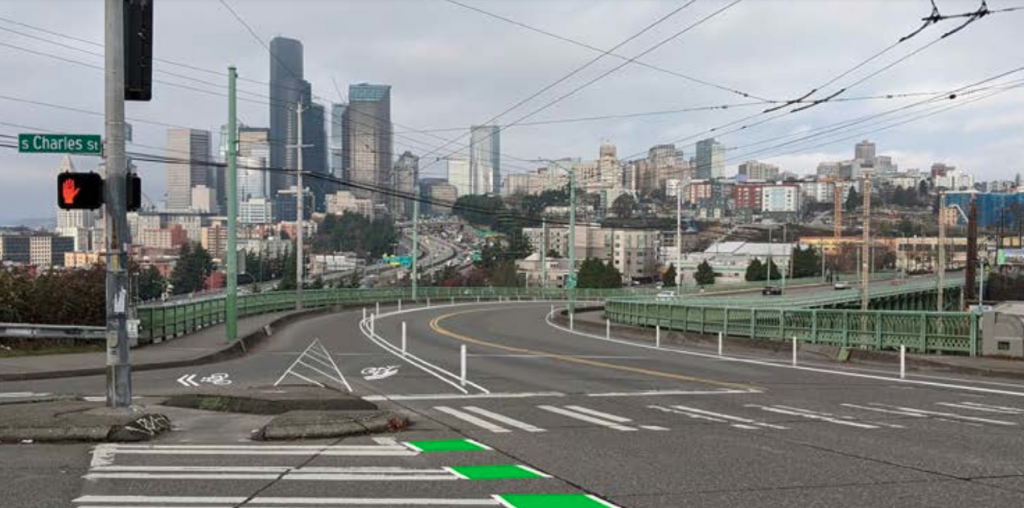
A protected bike lane all the way from the Mountains to Sound trail at the north tip of Beacon Hill to Yesler Way would truly connect Seattle’s separated bike facility network: Yesler Way includes a connection to the protected bike lanes on Broadway and beyond. But there are no plans to bridge that gap, due to the disruption that SDOT says it would have on the traffic network, particularly on operations of the First Hill Streetcar, which runs in mixed traffic on Yesler Way and South Jackson Street.
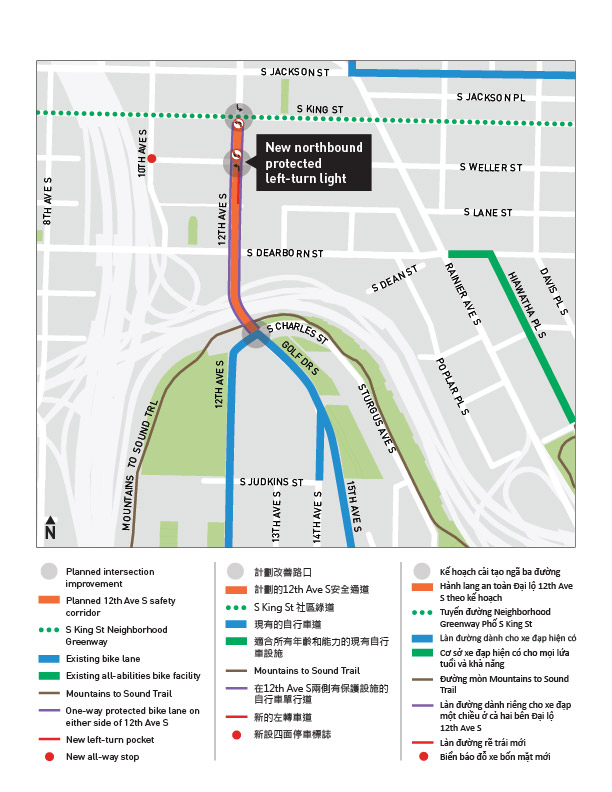
Instead the protected bike lanes will terminate at South King Street, which the department is calling a neighborhood greenway but which the facts do not support, frankly. SDOT’s own website notes that neighborhood greenways typically have traffic volumes of fewer than 1,000 vehicles per day–South King Street has over four times that amount. The speed humps that were added may help a little, but without separation from vehicles or significant traffic diversion South King Street will not be an all-ages-and-abilities route. SDOT has installed a partial diverter at Rainier Avenue South, but most people biking will be using the segment between 12th Avenue South and 5th Avenue South, where no diversion is planned.
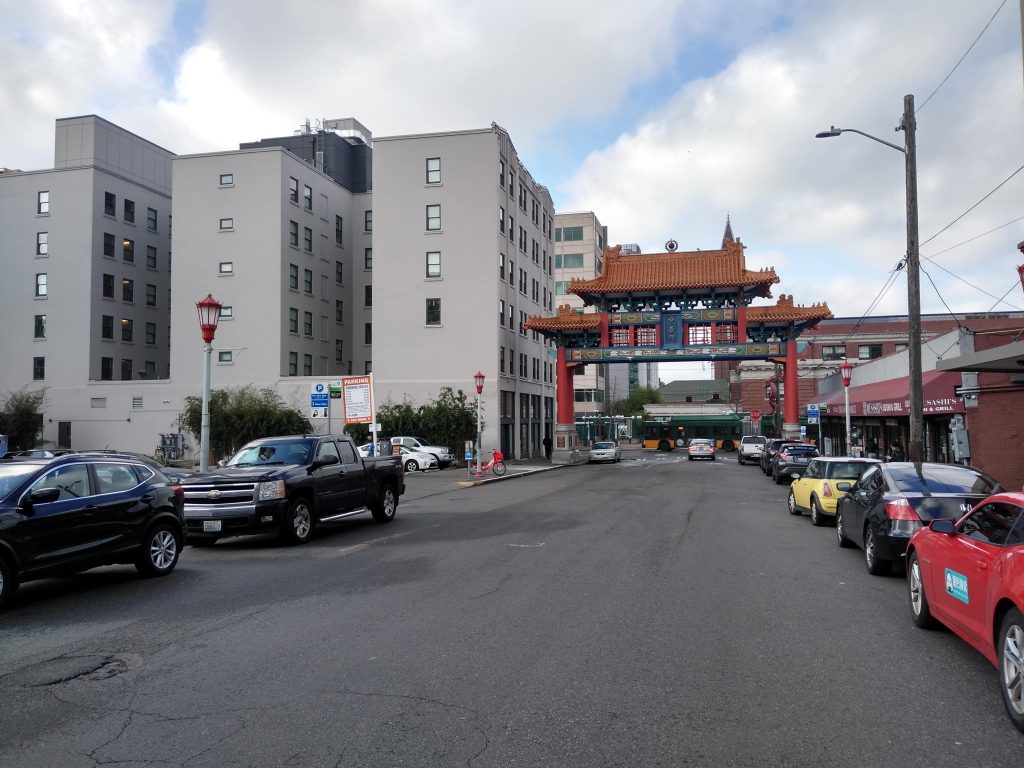
The 12th Avenue South protected bike lane will include a modified bus stop south of South Weller Street that SDOT has implemented before on bike corridors like Northeast 65th Street–a so-called “Toronto-style” bus stop where riders exit the bus directly into the bike lane, as opposed to an island between the bike lane and the travel lane. This bus stop design will allow SDOT to preserve a turn lane at South Weller Street, where the department is installing a left-turn signal to prevent drivers from turning across the bike lane.
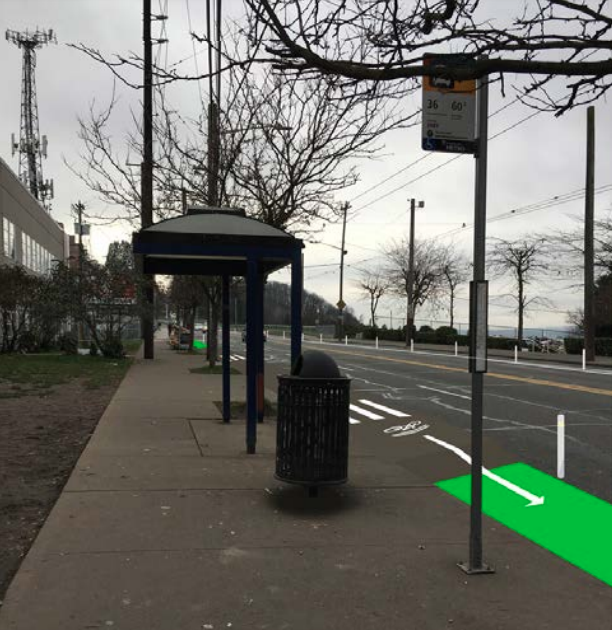
Perhaps the best element of the 12th Avenue South protected bike lane is the elimination of the slip lane on the south end of the bridge as 12th Avenue South continues up Beacon Hill. This was a harrowing place for people biking, walking, and rolling to cross as traffic generally did not slow down–now the turn will be squared, and only people biking will be using the former slip lane.
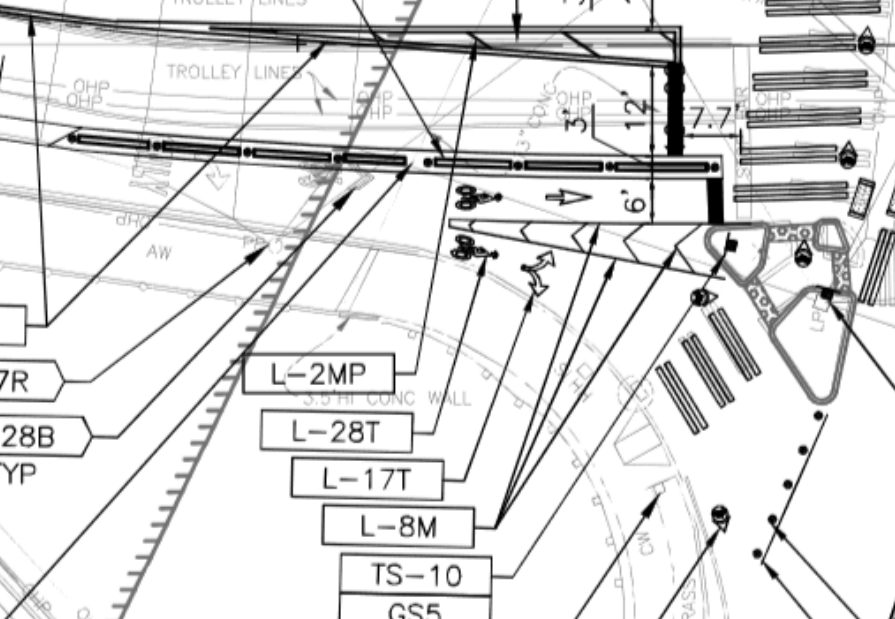
Ultimately this bike lane on 12th Avenue South will connect to what could be one of the most transformational projects in Seattle’s bike history: a safe route connecting the entirety of Beacon Hill, which is being designed now with construction scheduled for 2023. Funding for this project from the Mercer Megablock appears secure and it is moving forward.
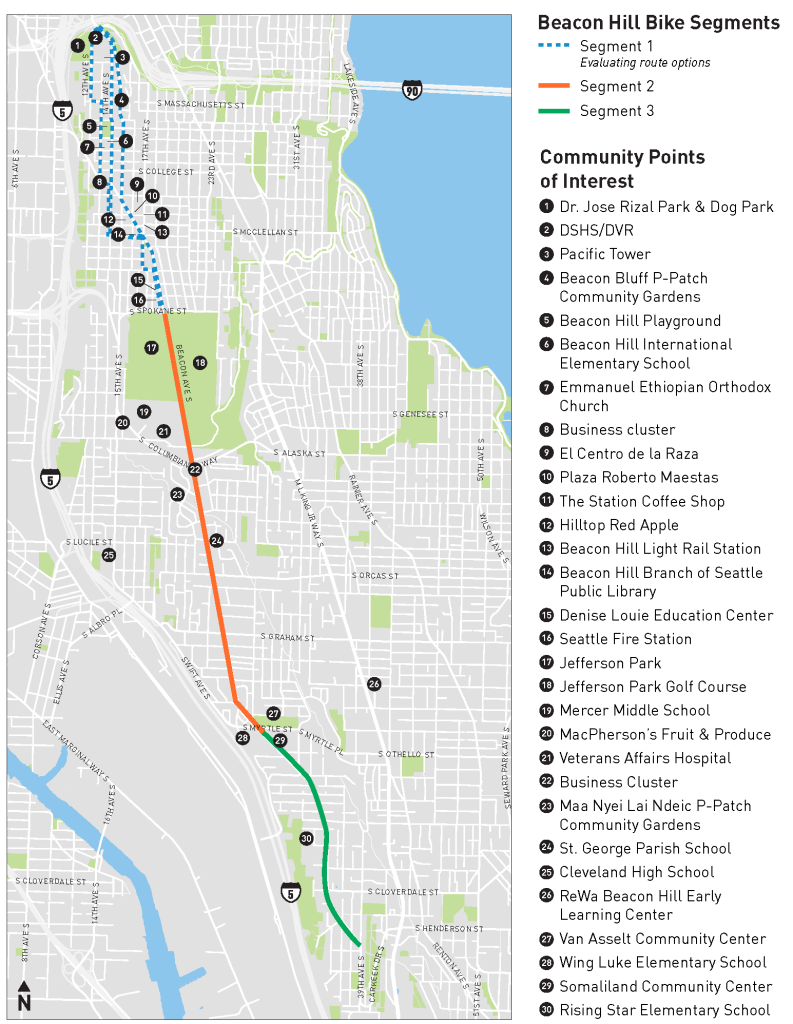
We don’t know exactly what the facility will look like yet, but we do know the city is planning to install it in three phases. The northern segment, which will run from the 12th Avenue South lane being installed this year past the Beacon Hill light rail station to Beacon Avenue South, is the segment where the city is looking at the most options, with the most likely being protected bike lanes on either 15th Avenue South or 14th Avenue South. The Seattle Bicycle Advisory Board at its meeting this month leaned toward having the lane on 15th Avenue South. This route would be the most direct and intuitive. More details on the design of this project are expected in the coming months.
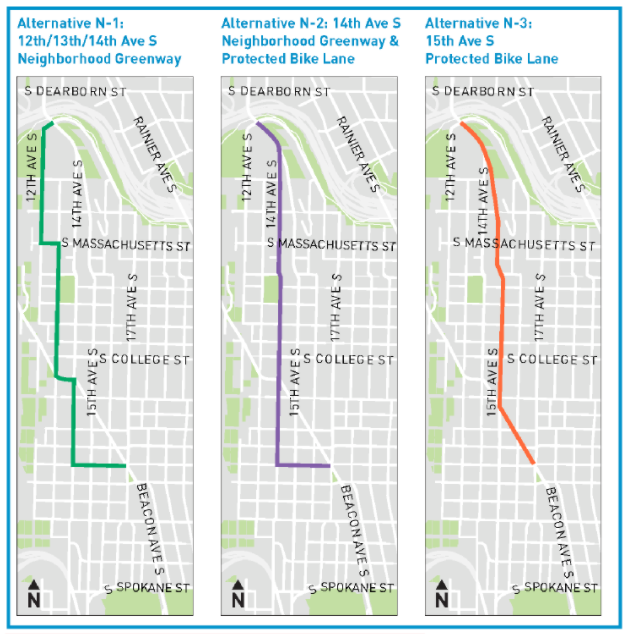
Despite facing the prospect of more budget cuts this year, some major projects are still moving forward in the city’s protected bike lane program that should make a real difference in the ability to safely navigate our city’s streets.
Ryan Packer has been writing for The Urbanist since 2015, and currently reports full-time as Contributing Editor. Their beats are transportation, land use, public space, traffic safety, and obscure community meetings. Packer has also reported for other regional outlets including BikePortland, Seattle Met, and PubliCola. They live in the Capitol Hill neighborhood of Seattle.

